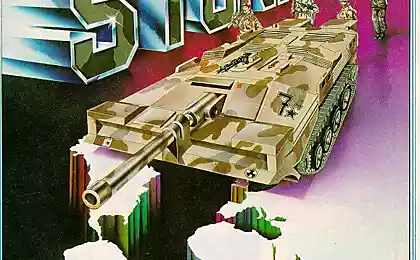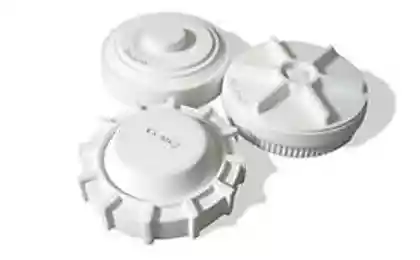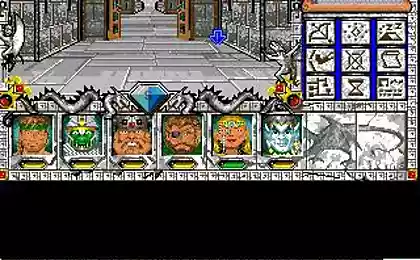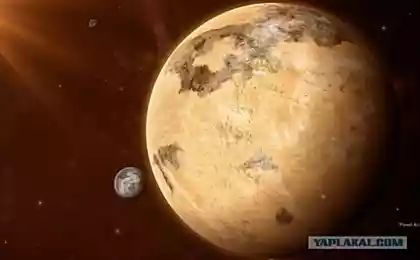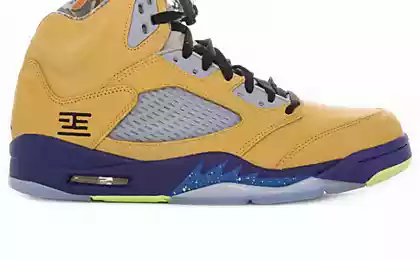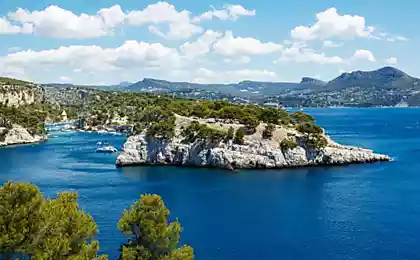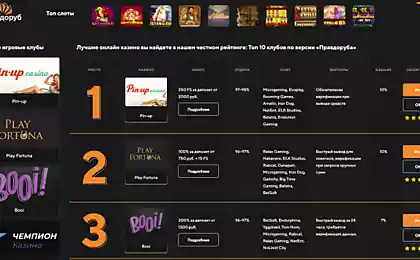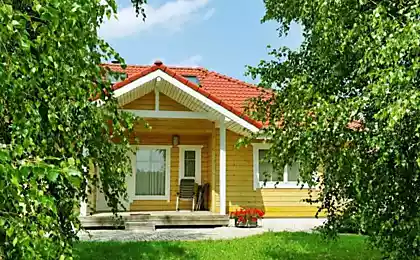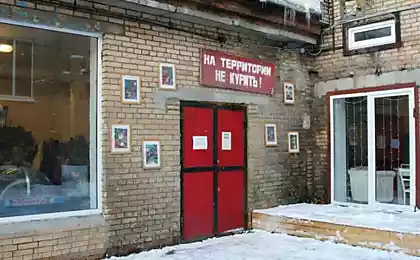1408
Retro Mortis: RTS, Part 1: It all started in the desert ...
- < Part 1: It all started in the desert ... [Dune II: The Building of a Dynasty]
- Part 2: Then came the blizzard ... [Warcraft: Orcs and Humans] translation process em>
- To be continued ...

Preface
(You can safely skip this introduction) em>
Anticipating these lines of text, I want to say that most of this discussion is based on hypotheses and my subjective observations. Despite this, I believe that the text contains enough truth, or at least food for thought, enough to him to write (and read). Em>
The main purpose of the article - by encouraging critical analysis of the good old games stimulate rethinking their inherent approaches applied to modern design. I'm trying to find interesting solutions in the design, which has since been widely used or, conversely, are not used at all. With an understanding of how some things have become so, what became, and why others did not survive to the present day, the easiest way to identify the key elements that are (re) use. Em>
Introduction
retro-gaming , - «is a collection of old video games for PCs, consoles or arcade and play in them." This hobby is gaining popularity all the past decade, even some games are developed in response to this trend. Become commonplace restart the series returning to its roots, or containing plot twists with references to the original title.
A couple of years ago I was driving this experiment, when he developed the AAA game for a big publisher. In the form of "reverence primary source" game ends 2, 5D geymleya from the original saydskrolla.
Retro gaming as a phenomenon is often criticized for the operation of nostalgia players argumentiruemoy that the deification of these games based on memories from my childhood. Despite the fact that I tend to agree with this, I think it can be rough nedotsenkoy value of old games.
It is true that games developed 10-20 years ago were limited to the technical features that may seem inconceivable to the modern observer. But such restrictions also forced developers to approach the problem more creatively .
In those days, some genres, to which we are now accustomed (MOBA, RTS, global strategies 4X), simply did not exist. A few visionaries had a rough idea of the gameplay, which they wanted to achieve, and so it happened that this was born a game genre.
One of the common misconceptions prevalent in modern players and young designers manifested in the opinion that the predecessors of today's games were just skeletons or simple experiments without much depth. In my experience, this is as far from the truth, and often I have come to understand that the study of these "ancestors" confuses me.
As an example, one of the first games, Spacewar! (Officially released in 1962, but has been in development for at least 1953) was actually very difficult arcade game. To begin with, it was a multiplayer game in real time, where two ships were trying peremanevrirovat his opponent, overcoming gravity and avoiding collisions with the help of engines. It featured all the basic concepts of firing missiles and lasers (shells) - hit points, armor points, and complex enough control.
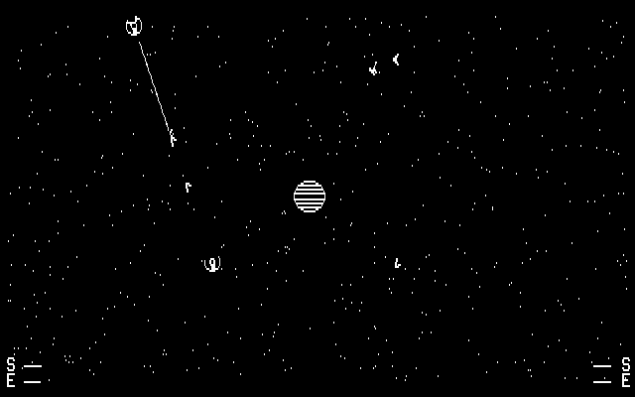
SpaceWar! (DOS version, about 1986) i>
But instead of simply listing the random facts about Spacewar !, return to the analysis of retro games. There are fundamental knowledge, which is simply lost in the genres that exist decades and in crisis. Often the same solution hiding in progenitors of these genres.
Today, I would like to discuss one of these genres: RTS (Real-Time Strategy Game, real-time strategy).
Context
There are many games that have led to the emergence of RTS in the form that we're used to now, but most still agree that первым step to the modern RTS was & quot; Dune II & quot ;. If you've always wondered what was then the first part of Dune, - in fact, adventure games.
Dune 2 was the first title, razzhegshim "war" between Westwood Studios (was overbought EA, now disbanded) and Blizzard Entertainment (now part of Activision Blizzard) between 1992 and 1998.
In a sense, much of what makes the game RTS, were laid in Dune 2, and in the games, which were created during her subsequent confrontation. And it was severe (with a high demand for such games), which forces to reduce development costs and limit the functionality ( fichekrip ).
Given the history of this fierce competition for market share, even surprising that so popular Starcraft II (2010) does not differ much from the game, made 20 years before her. "War RTS» she fell victim to further conflict - the war for better graphics. And for a long time we have not seen on the RTS scene is nothing particularly new. Some titles have the best performance than others, but most were slepleno one and the same patterns.
Although thanks to that "war", real-time strategy in today's day - an important part igrostroya, what we gained or lost during this time, and how to use it, requires careful consideration.
Dune II: The Building of a Dynasty

There is an explanation why Dune II «invented" genre. Not only because it introduced the basic mechanics of RTS, but also was completely finished product with shocking scale. It was a complex experience that is necessary to separate for understanding. Even the Westwood took a while to figure out what they did, and repeat it in a series of C & C.
Of course, not all parts of the game were invented during development, some ideas were borrowed. But they worked fine with each other, making Dune II with something more than just the minimum viable product (MVP, Minimum Viable Product).
Collect resources h4> Dune II made a collection of resources from the surface to the core of the production forces RTS. Mechanics seems natural for the genre, although in the case of Dune, it is, in fact, the need for: the brand Dune (books, movies and TV shows) is centered on the collection of spice. Unlike other strategies, gathering precious spice is much more priority than the battle. Armed conflict - just a consequence of the race for the possession of melange.
Energy h4> Another mechanics, which became the main feature of the genre (C & C and derivatives, mostly) - the concept of energy. In contrast to the concept of "food", which will be discussed in the next article, the energy used in the Dune to limit the rapid development framework, increasing the importance of logistics and providing strategic vulnerability.
Mercenaries h4> This is a mechanic, which was not followed in most titles. In addition to the standard system of production units (in which each unit has a cost and production time), in the Dune was also complements its mechanics market mercenaries, where the availability and price of units may vary, and the time of their "shipment» (ETA, Estimated time of arrival) was constant.
Landscape h4> Dune area is extensively used in mechanics. More than in subsequent RTS, was crucial to understand how the landscape affects the available options:
Asymmetry h4> Dune II presented and asymmetry of the parties involved. Although the majority of units were the same, some differences were standard units (speed, but weakened version of trikes in Ordos, reinforced quad and infantry Harkonnen, etc.). And two unique types of troops into a fraction.
- Part 2: Then came the blizzard ... [Warcraft: Orcs and Humans] translation process em>
- To be continued ...

Preface
(You can safely skip this introduction) em>
Anticipating these lines of text, I want to say that most of this discussion is based on hypotheses and my subjective observations. Despite this, I believe that the text contains enough truth, or at least food for thought, enough to him to write (and read). Em>
The main purpose of the article - by encouraging critical analysis of the good old games stimulate rethinking their inherent approaches applied to modern design. I'm trying to find interesting solutions in the design, which has since been widely used or, conversely, are not used at all. With an understanding of how some things have become so, what became, and why others did not survive to the present day, the easiest way to identify the key elements that are (re) use. Em>
Introduction
retro-gaming , - «is a collection of old video games for PCs, consoles or arcade and play in them." This hobby is gaining popularity all the past decade, even some games are developed in response to this trend. Become commonplace restart the series returning to its roots, or containing plot twists with references to the original title.
A couple of years ago I was driving this experiment, when he developed the AAA game for a big publisher. In the form of "reverence primary source" game ends 2, 5D geymleya from the original saydskrolla.
Retro gaming as a phenomenon is often criticized for the operation of nostalgia players argumentiruemoy that the deification of these games based on memories from my childhood. Despite the fact that I tend to agree with this, I think it can be rough nedotsenkoy value of old games.
It is true that games developed 10-20 years ago were limited to the technical features that may seem inconceivable to the modern observer. But such restrictions also forced developers to approach the problem more creatively .
In those days, some genres, to which we are now accustomed (MOBA, RTS, global strategies 4X), simply did not exist. A few visionaries had a rough idea of the gameplay, which they wanted to achieve, and so it happened that this was born a game genre.
One of the common misconceptions prevalent in modern players and young designers manifested in the opinion that the predecessors of today's games were just skeletons or simple experiments without much depth. In my experience, this is as far from the truth, and often I have come to understand that the study of these "ancestors" confuses me.
As an example, one of the first games, Spacewar! (Officially released in 1962, but has been in development for at least 1953) was actually very difficult arcade game. To begin with, it was a multiplayer game in real time, where two ships were trying peremanevrirovat his opponent, overcoming gravity and avoiding collisions with the help of engines. It featured all the basic concepts of firing missiles and lasers (shells) - hit points, armor points, and complex enough control.

SpaceWar! (DOS version, about 1986) i>
But instead of simply listing the random facts about Spacewar !, return to the analysis of retro games. There are fundamental knowledge, which is simply lost in the genres that exist decades and in crisis. Often the same solution hiding in progenitors of these genres.
Today, I would like to discuss one of these genres: RTS (Real-Time Strategy Game, real-time strategy).
Context
There are many games that have led to the emergence of RTS in the form that we're used to now, but most still agree that первым step to the modern RTS was & quot; Dune II & quot ;. If you've always wondered what was then the first part of Dune, - in fact, adventure games.
Dune 2 was the first title, razzhegshim "war" between Westwood Studios (was overbought EA, now disbanded) and Blizzard Entertainment (now part of Activision Blizzard) between 1992 and 1998.
In a sense, much of what makes the game RTS, were laid in Dune 2, and in the games, which were created during her subsequent confrontation. And it was severe (with a high demand for such games), which forces to reduce development costs and limit the functionality ( fichekrip ).
Given the history of this fierce competition for market share, even surprising that so popular Starcraft II (2010) does not differ much from the game, made 20 years before her. "War RTS» she fell victim to further conflict - the war for better graphics. And for a long time we have not seen on the RTS scene is nothing particularly new. Some titles have the best performance than others, but most were slepleno one and the same patterns.
Although thanks to that "war", real-time strategy in today's day - an important part igrostroya, what we gained or lost during this time, and how to use it, requires careful consideration.
Dune II: The Building of a Dynasty

There is an explanation why Dune II «invented" genre. Not only because it introduced the basic mechanics of RTS, but also was completely finished product with shocking scale. It was a complex experience that is necessary to separate for understanding. Even the Westwood took a while to figure out what they did, and repeat it in a series of C & C.
Of course, not all parts of the game were invented during development, some ideas were borrowed. But they worked fine with each other, making Dune II with something more than just the minimum viable product (MVP, Minimum Viable Product).
Collect resources h4> Dune II made a collection of resources from the surface to the core of the production forces RTS. Mechanics seems natural for the genre, although in the case of Dune, it is, in fact, the need for: the brand Dune (books, movies and TV shows) is centered on the collection of spice. Unlike other strategies, gathering precious spice is much more priority than the battle. Armed conflict - just a consequence of the race for the possession of melange.
Many titles have inherited the mechanics, but did not try to justify it in terms of the game world (including Tiberian Sun, who openly imitated Dune in this regard). For example, in Warcraft: Orcs and Humans Player studied to extract local resources (wood and gold) for the construction of the outpost. If the first outposts it made sense, because it was a new settlement, but as the conflict continues, the player continues to build new outposts. Although it is clear that more efficient use of local timber (than, say, bring them to the other gates at a distance of a couple of leagues), still bothered that the player could not take with prebuilt resources and the game does not explain it. It looked artificial, because in between missions Dune whole spice was sent to their home planet, and the new colony / place of extraction was erected during the mission.
So the gameplay criminal tolerated "as is", just because it worked, and is not processed under the theme of the game (Command and Conquer, Warcraft, Starcraft, Age of Empires, Empire Earth, and the list goes on)
Here Dune 2 is released. She has created an interesting collection of mechanics resurov, but also turned it into a key part of the game. In Dune, gathering resources - not just maintenance mechanics, and some MVP, and this is a big difference.
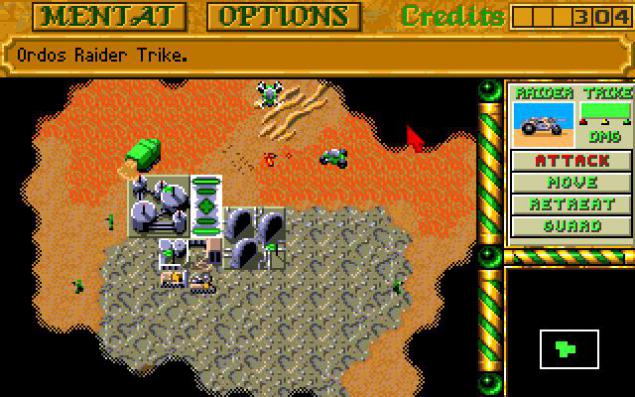
collect precious spice ... i>
As an example, one of the early missions is a collection of resources and nothing else. The player must understand that the establishment of military units only slow its achievement of this goal. While many other real-time strategy used it as a mere introductory mission, purpose did it Dune player with the very first cutscene. It was only after some time, the campaign will become a global conflict, when the player explained that to control the spice, not enough just to collect it faster, but - it is necessary to destroy the rest of the house. Thus, the war was due to the economic side.
Legacy system resources can be seen in different games (in the same series C & C). It evolved in most cases, but I will try to consider this in future articles. There is also merit in creating Dunes vanilla-concept caused by the setting of the game.
Energy h4> Another mechanics, which became the main feature of the genre (C & C and derivatives, mostly) - the concept of energy. In contrast to the concept of "food", which will be discussed in the next article, the energy used in the Dune to limit the rapid development framework, increasing the importance of logistics and providing strategic vulnerability.
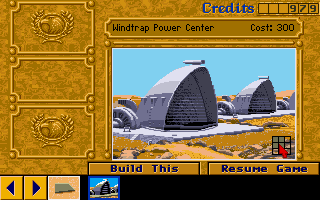
Vital Vetrolovushki! I>
Wind traps may be perceived as just "another building for the building," but they are more than that. Vetrolovushka requires resources for the construction, which reduces the rate of the rest of the player in the infrastructure, causing it to invest more in units.
In addition, it gives the player the understanding that the base is not self-sufficient and it is necessary to watch, determines whether the excess energy, or enough to have only as much as necessary (with possibly dramatic consequences).
More importantly, it introduces the concept of weak base. Enemy AI in this game is not too smart, but he understands that energy - is the key. As a result, if vetrolovushki located on the edge of the base and relatively unprotected, they are at risk of attack vectors, just to break the player economically. The loss of several units - relatively acceptable loss brought economic harm.
And since vetrolovushkami generated energy depends on the condition of the building, it is not necessary to destroy them completely, just enough to cause such damage to lower the production of lower power base. Although the player may repair the damage for a certain fraction of the cost of the building, this is often enough to compensate for the loss of units (cost of repairs + time spent without energy).
C & C system uses the until now, many RTS returned to it without any changes. And, although it is not the "cheerful and catchy" mechanics, it reveals the potential of logistics management database.
Mercenaries h4> This is a mechanic, which was not followed in most titles. In addition to the standard system of production units (in which each unit has a cost and production time), in the Dune was also complements its mechanics market mercenaries, where the availability and price of units may vary, and the time of their "shipment» (ETA, Estimated time of arrival) was constant.
This will allow players to pay a non-constant amount of spice (depending on global demand) for reinforcement. Because ETA has been fixed for all units (less than the time of their training), and in one delivery could include several units, the player becomes possible to produce on the field 4-5 tanks at the same time as usually produces only one. The downside was the price for urgency. Although in a tense struggle and can pay a hefty sum for a quad or Trike (one of the weakest units).
This system was more tactical complement, giving players the opportunity to
rapid replenishment armies without the need of complex infrastructure in exchange for resources. Plus it created the effect of uncertainty without turning in random. Based on demand, prices could fluctuate, varied availability of units.
Most importantly, the main reason for the existence of mercenaries - that he gave any player access to exclusive units to factions.

The carrier is going to buy ... i>
Delivery time has been fixed, and it allows to accelerate the production of "high-Tekovská" units. Or economic - for example, harvesters, production of which has been long and tedious. However, if harvesters were available at the spaceport, they can be delivered quickly, and production centers were released for the production of military units.
Or players can save on "upgrade", producing standard units and adding to their strength, for example, missile tanks, which are mainly required in small quantities.
Moreover, the player can order units to the spaceport just to make sure that the enemy does not have access to them. For example, the player can buy all siege tanks to the opponent does not have a chance to strengthen the army quickly, and make sure that the subsequent attack encountered unexpected resistance.
This mechanic is rarely used, although there is a feature in several key RTS later. In Ground Control, for example, the collection of units - an order and wait for delivery from Motherships. As a result, all units have a fixed ETA, and production units is determined only by the amount of resources (rather than the infrastructure's capacity). Although the price is not based on demand and the units are only available for the player, the basic principles are the same.
Landscape h4> Dune area is extensively used in mechanics. More than in subsequent RTS, was crucial to understand how the landscape affects the available options:
On the one hand it was impossible to build a database anywhere. She needed a "rocky" foundation (and, ideally, built on concrete slabs). This greatly affected the opportunities and allowed designers to control levels place obustroyki base. Some missions are harder just because a player has been limited amount of space (ie number of buildings). Limited resources ensures that the player understand the concept of building an effective framework.
In addition, there were several kinds of sand. Units respond to them in different ways depending on the type. Some units went faster on the "hard" sand than usual, the other - at the same rate. This led to the importance of management of the attacking forces. Underestimation of the area led to the fact that troops on the way to the enemy base stretched in a chain, and died very quickly.
Elevations also added strategic depth. Infantry largely destroyed any technique, rarely providing reliable firepower. But she could climb the rocks and becomes immune to instant Killen from tanks.
That, and the fact that most of the infantry could not resist when firing large shells allows the use of heavy infantry (with pistols) at higher elevations to protect the base from the tanks and air units. This makes them a potential addition to any army. Although it should be noted that if there were no elevations, as the infantry unit was used almost useless.
Although the concept of hills used RTS, it is usually reduced to the modifier, which gives the advantage of height (higher accuracy, more visibility, or the inability to counter-attack). In Starcraft units had a penalty for accuracy against the units, which are located above, while in Starcraft: Wings of Liberty, they just could not shoot at above-surface, while this part of the map is not visible to other units (or flying in an elevated surface). In Warhammer 40k terrane modifier increases or decreases the survival of the unit with respect to enemy fire (operating shelters).
But most RTS hardly contain interesting implementations terrane-features, limiting the possibility of damage to the territory (C & C Tiberian Sun) or deceleration units (ore fields C & C: Red Alert).
Asymmetry h4> Dune II presented and asymmetry of the parties involved. Although the majority of units were the same, some differences were standard units (speed, but weakened version of trikes in Ordos, reinforced quad and infantry Harkonnen, etc.). And two unique types of troops into a fraction.
Atreides - the only house with an offensive air support, which causes enemies to radically revise its defense (more missile turrets and heavy infantry, tanks less). They also had a Sonar tank that has injured area (AoE, Area of Effect), which was especially effective against concentrations of enemy forces (such as infantry), but it also makes it possible to fire on their own (friendly fire).
In Ordos was a stunning tank, which could confuse the enemy troops and temporarily lure to his side. Also, they can bring to the field of stealth unit called Saboteur to inflict critical damage to buildings (later appeared as an engineer in a series of C & C).
There was Harkonnen Devastator, which, in fact, was just reinforced and extremely expensive version of the tank. Plus nuclear missiles, allowing cause scot blow to the enemy.
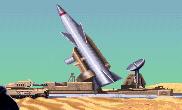
«Hand of Death" is ready! I>
Space timelapse: 12000 photos astronaut Alexander Gerst one video
Commit to the Linux kernel from a four-year girl





